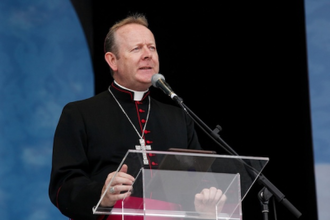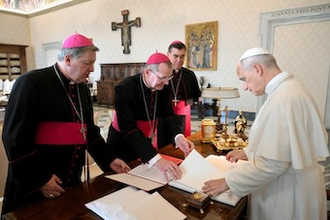Finding Neverland; Fakers; I am David; Inside I'm Dancing
Finding Neverland
US, 2004, director: Marc Foster
Any film that fosters creativity and imagination is worthy of praise. Finding Neverland does this - and more. Peter Pan has been a favourite for over a hundred years - in the theatre and on the screen. Disney did animation versions in 1953 and 2002. Steven Spielberg used the basic outline for ET and for his version of midlife crisis and rediscovering the inner child, Hook. PJ Hogan celebrated the centenary of JM Barrie's play with a lavish Peter Pan (2003).
But, who was JM Barrie? Finding Neverland offers us a portrait of the playwright, dramatises his friendship with the Llewellyn-Davies children which gave him the inspiration for his play and, finally, shows some glimpses of the performance of the play. The film is the more unexpected since director Marc Forester's previous work included the small-budget film about pregnancy, Everything Put Together, and the grim, Monster's Ball.
The setting is 1903. It is meticulously re-created, giving great visual pleasure to those who enjoy period dramas. The cast is impeccable. Johnny Depp has proven himself one of the best screen presences today (from Edward Scissorhands to Pirates of the Caribbean). With Scots accent, quiet bearing and an empathy for children, his Barrie is something of a lonely figure who retreats into his imagination when life is too difficult but who has to help his friend Sylvia Llewellyn-Davies to face the reality of her terminal illness. Kate Winslet is at her best as Sylvia, a grieving widow, devoted but harassed mother with a platonic devotion to Barrie.
The film also boasts a strong supporting cast. Julie Christie is now a grande dame of the screen as Sylvia's possessive and domineering mother. Dustin Hoffman is Barrie's theatrical entrepreneur and Radha Mitchell (who had starred in Everything Put Together) is dignified as Barrie's estranged wife. Freddie Highmore (Two Brothers, Five Children and It) has the pivotal role of the sceptical boy, Peter, who is resolutely realistic and has to discover the power of imagination.
A major theme of Finding Neverland is that of making the distinction between fantasy and reality. Fantasy can be a wonderful and necessary refuge. It helps the Llewellyn-Davies children cope and grow. It enables Barrie not to give in or give up. But, he has to face the reality of his glacial marriage and accept his responsibility for this as well as help Sylvia not to pretend that her illness is not serious. While Peter Pan never grew up -and Barrie remarks that children should not go to bed because they will only wake up a day older - Barrie knew that we all must.
Fakers
UK, 2004, director: Richard Janes
At only 86 minutes, this is a brief confidence trick caper set in contemporary London.
After an elaborate prologue in Sicily 1911, with a romantic artist pursued by the vengeful husband of his voluptuous model, Fakers opens with a vigourous animated credits sequence that finally introduces us to Nick, a genial young man about town (Matthew Rhys) who has fallen foul of a dramatically psychopathic gangster (Art Malik) who can switch instantly from orders for bashings to semi-sophisticated discussions about art theory. Nick is in debt to the tune of 50.000 pounds with four days to raise it.
The plot consists mainly of persuading London gallery owners that some sketches, copies of the aforesaid Sicilian artist's lost masterpiece, are genuine so that he can sell them and pay off his debt. He is helped by the nice copyist (Tom Chambers) and his tough-as-nails sister (Kate Ashford). Things go right and things go wrong but you know a happy ending is somewhere there (in Sicily) but not until a nice twist at the end concerning the artist.
Pleasantly inconsequential.
I am David
US, 2004, director: Paul Feig
During the 1960s, Anne Holm's novel sold millions of copies and was read widely by children. The producers of this film remembered it and wanted to bring it to the screen forty years later. It has received a number of awards at festivals and has been screened for a number of NGOs, especially those concerned with refugees.
This is a refugee story for children, a blend of optimism as well as wariness about trusting people. The treatment is very straightforward, rather unsophisticated and easy to damn with faint praise by saying that it worthy. Accepting this worthiness, one must say that at times it is quite a moving little film.
The setting is 1952 in a Bulgarian gulag. David has been separated from his politically active parents and interned in the hard labour camp. The film opens with his escape from the prison. It then continues his journey to Greece, by boat to Italy, through Italy to Switzerland on his way to Denmark with a sealed envelope which will reveal the truth about him.
There are flashbacks to the harshness of the camp, working in the quarries, executions for stealing soap. David's friend in the camp, a bespectacled, self-sacrificing prisoner, Johannes, is played by Jim Caviezel. Joan Plowright plays a familiar role as an elderly artist who befriends and saves David. David himself is played with grim determination to survive by young British actor, Ben Tibber.
Because he meets with success, it could seem that the world is full of kind people eager to help this mysterious young refugee. However, it is not always easy. In fact, there are a lot of unfriendly people out there. But, this is a picture of the indomitable human spirit, aimed at a younger audience and their parents.
Inside I'm Dancing
Ireland, 2004, director: Damian O'Donnell
For a while you might think you are in the middle of a Dublin Cuckoo's Nest presided over by Brenda Fricker. She is benign, perhaps too patronisingly so, but strict in the running of her institution. However, is not a mental institution, it is a home for the physically handicapped, especially those with cerebral palsy or other paralysing conditions.
In comes Rory (James McAvoy) who sees his mission in life to be the local Randle Patrick McMurphy. Not slow with a wisecrack or a rebellious sneer, he befriends Michael (Steven Robertson) who is affected by cerebral palsy. Rory is one of the few people who can understand Michael's difficult speech.
Rory makes attempts to get approval for living outside and, with Michael's help, achieves this. Most of the film is about how they manage and don't manage, people's reactions to them, their attempts to live as normal or ordinary a life as possible. Much works out. Much does not. They employ supermarket worker, Siobhan (Romola Garai), to look after them, both becoming emotionally dependent on her as well, unwilling to realise that she has a life of her own.
There is a great deal of pathos, especially as the film ends, but director O'Donnell (who was able to bring to life the British Pakistani family in East is East) gets strong performances that avoid the too-easily mawkish aspects of the plot.
For a sometimes grim subject, this film is upbeat and hopeful.
LONDON - 8 November 2004 - 1,200 words















